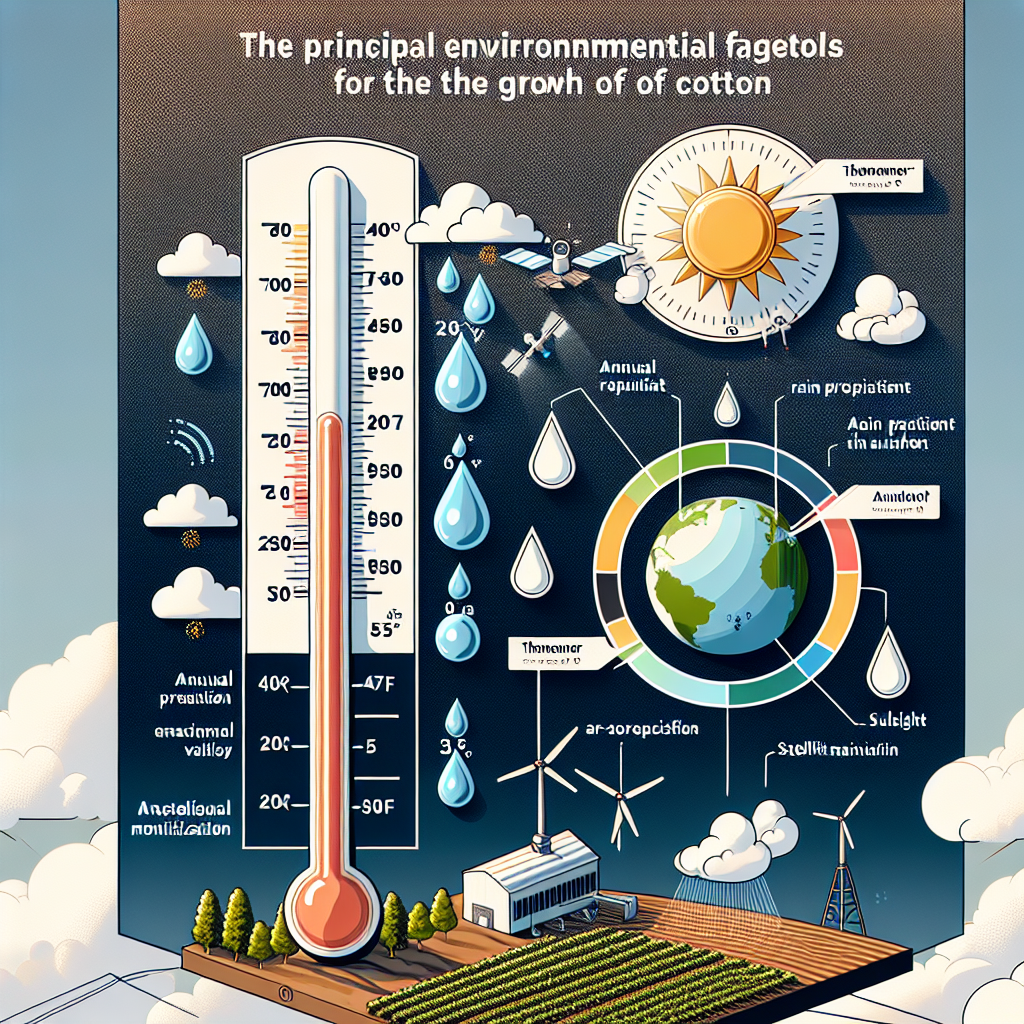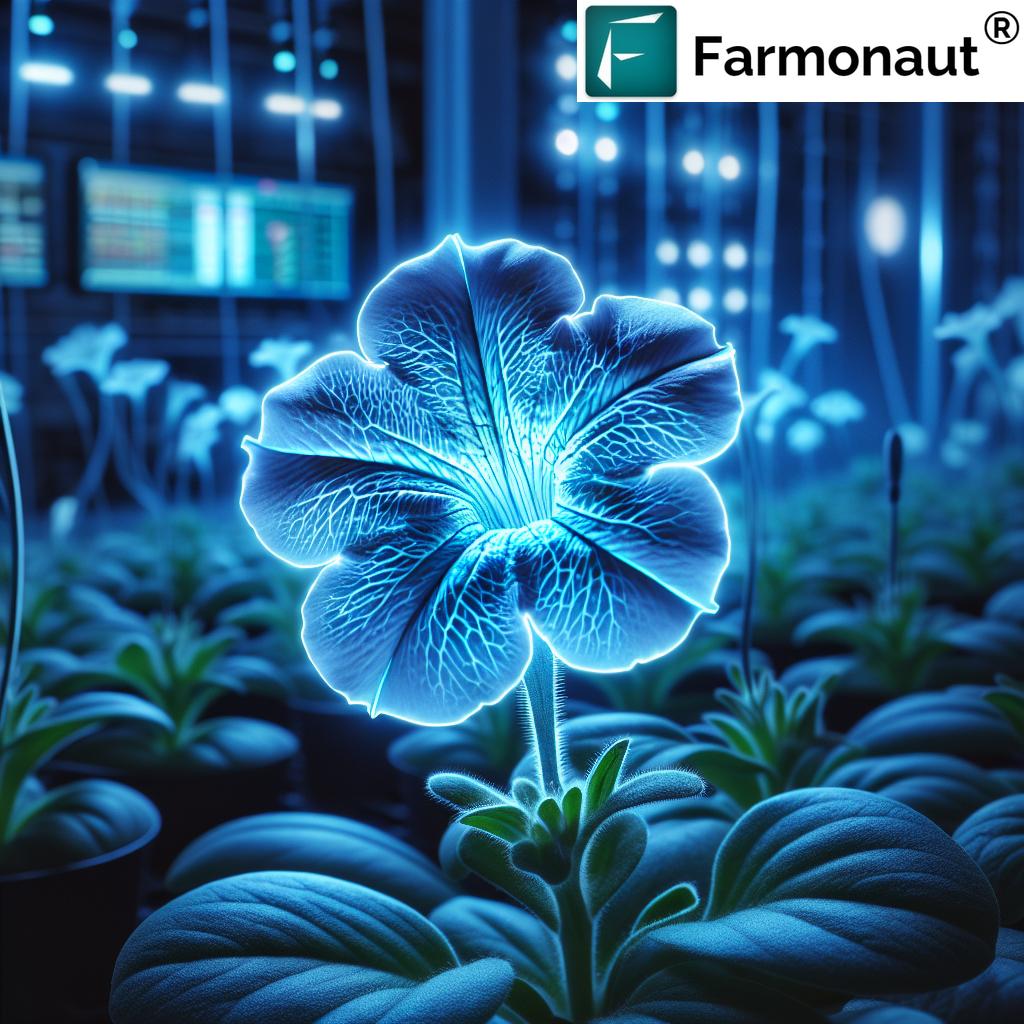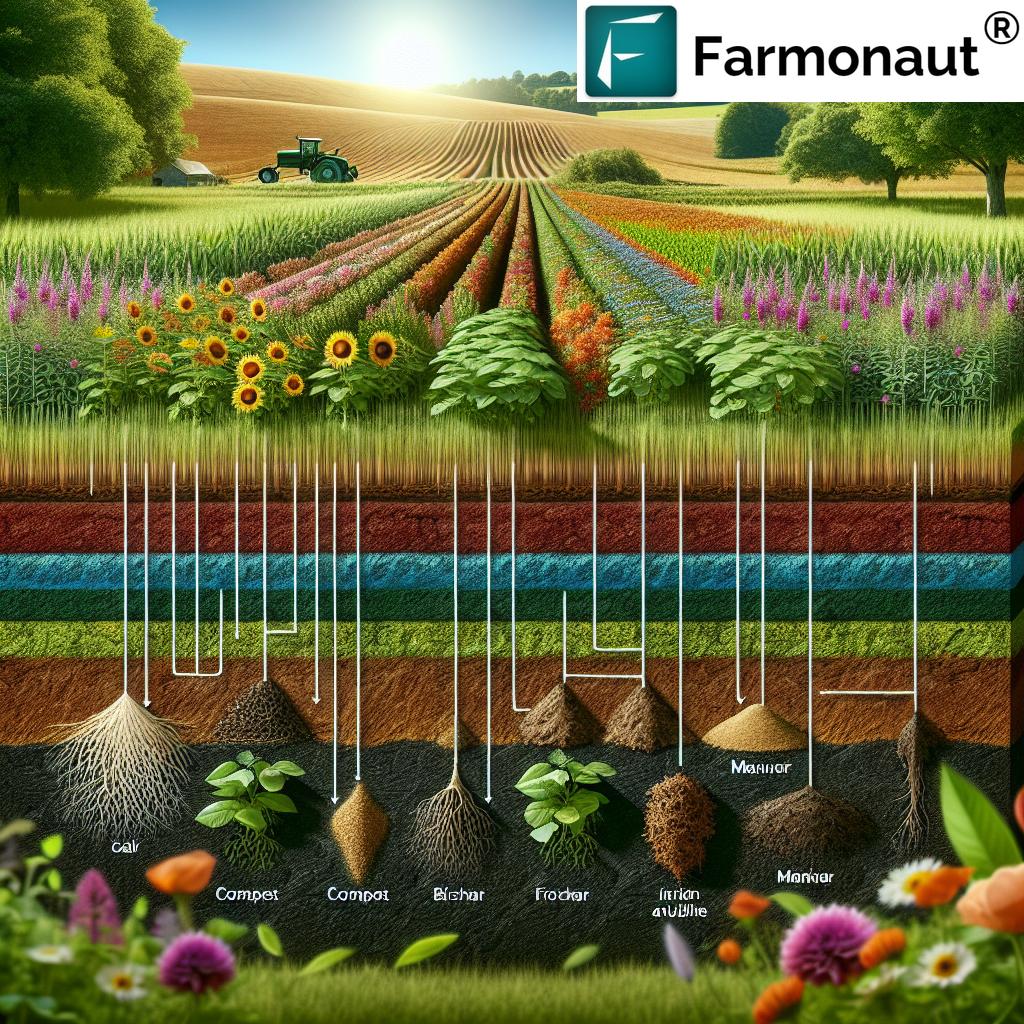Cotton Leafhoppers and Jassids
Amrasca devastans
Caused by insect
Factors –
a- Nymph and adult leaf hoppers feed on leaves.
b- Outer leaf parts appear yellowish or burned and tend to curl upwards.
c- Leaves are similar and feature mosaic pattern.
Hosting body – cotton
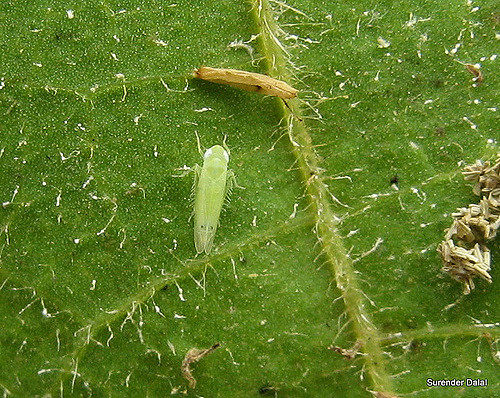
Identifiable traits
The affected leaves turn yellowish, then brownish starting from the margins and migrating to the midrib. Leaves gradually show signs of curling before drying completely and shedding. Severe incidences result in “hopper burn” injury and death of leaves, eventually leading to the stunting of young plants. The fruiting capacity of the plants infested at later stages of growth is significantly affected and in many cases cause lower yields and poor quality of the fibres. Before becoming necrotic, leaves may show higher trichome density on the lower side of leaves and a hardening of the tissues. These traits confers some degree of resistance against the insect in that it makes ovoposition and movement more difficult. However, it has a negative effect on the agronomic performance.
Inducing factors
Both nymphs and adults of Amrasca devastans suck the plant sap and introduce salivary toxins that damage the tissue and impair photosynthesis in proportion to the amount of feeding and the number of insects. First and second generation of nymphs feed near the base of the leaf veins, older nymphs get distributed all over the leaves but feed chiefly from the lower side. Environmental factors such as moderate to high temperatures (21 to 31 ˚C), moderate to high humidity ranges (55 to 85%) either early in the morning or late in the evenings, and hours of sunshine affects positively the populations of this insect. Low temperatures and strong winds have a negative impact.
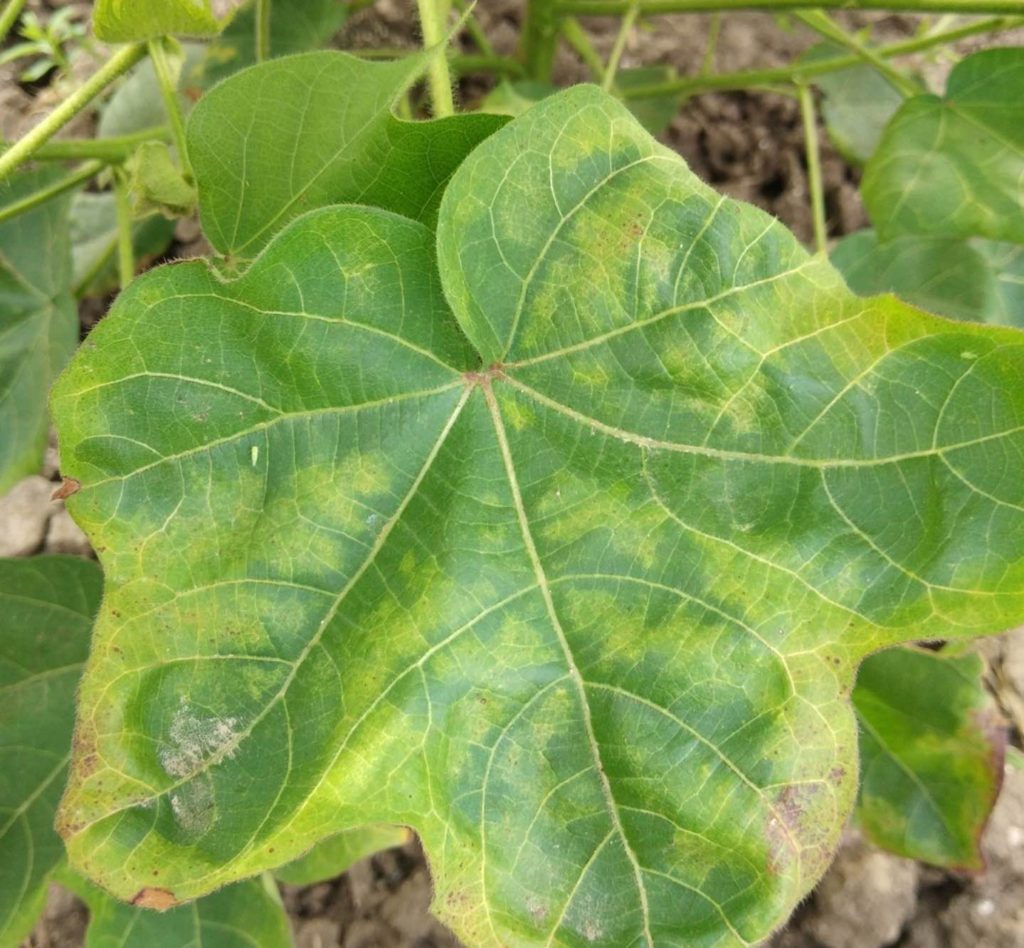
Organic remedies
Generalist predators of cotton leaf hopper are the common green lacewing (Chrysoperia carnea), species of the genus Orius or Geocoris, some species of Coccinellids and spiders. Make sure to promote those species and avoid use of broad-scale insecticides. Apply spinosad (0.35ml/L) when first symptoms occur.
Chemical remedies
Always consider an integrated approach with preventive measures together with biological treatments if available. Insecticide formulations based on malathion, cypernethrin (1 ml/L) or chlorantraniliprole + lambda-cyhalothrin (0.5 ml/L) can be applied. They may however also affect in severe cases and in a timely manner. Seed treatment with insecticides can also help to suppress leaf hopper populations on crop for 45-50 days.
Extra remedies
Plant resistant or tolerant varieties (several are available on the market). Monitor the orchards regularly for signs of cotton leaf hoppers. Maintain a balanced fertilization and especially do not apply excessive nitrogen.
We will keep posting about any such informative information on to our blogs, to help as many people as possible. Farmonaut is built upon a vision to bridge the technological gap between farmers and strives to bring state-of-the-art technologies in the hands of each and every farmer. For any queries/suggestions, please contact us at support@farmonaut.com.
We have some more interesting articles coming up soon. Stay tuned!
Wait!!
Before that…
Follow us at:
Facebook: https://facebook.com/farmonaut
Instagram: https://instagram.com/farmonaut
Twitter: https://twitter.com/farmonaut
LinkedIn: https://www.linkedin.com/company/farmonaut/
Pinterest: https://in.pinterest.com/farmonaut/
Tumblr: https://farmonaut.tumblr.com/
Youtube: https://www.youtube.com/channel/UCYWOOPPKATLgh4L6YRlYFOQ
AppLink: https://play.google.com/store/apps/details?id=com.farmonaut.android
Website: https://farmonaut.com
Satellite Imagery: https://farmonaut.com/satellite-imagery
Satellite Imagery Samples: https://farmonaut.com/satellite-imagery-samples











